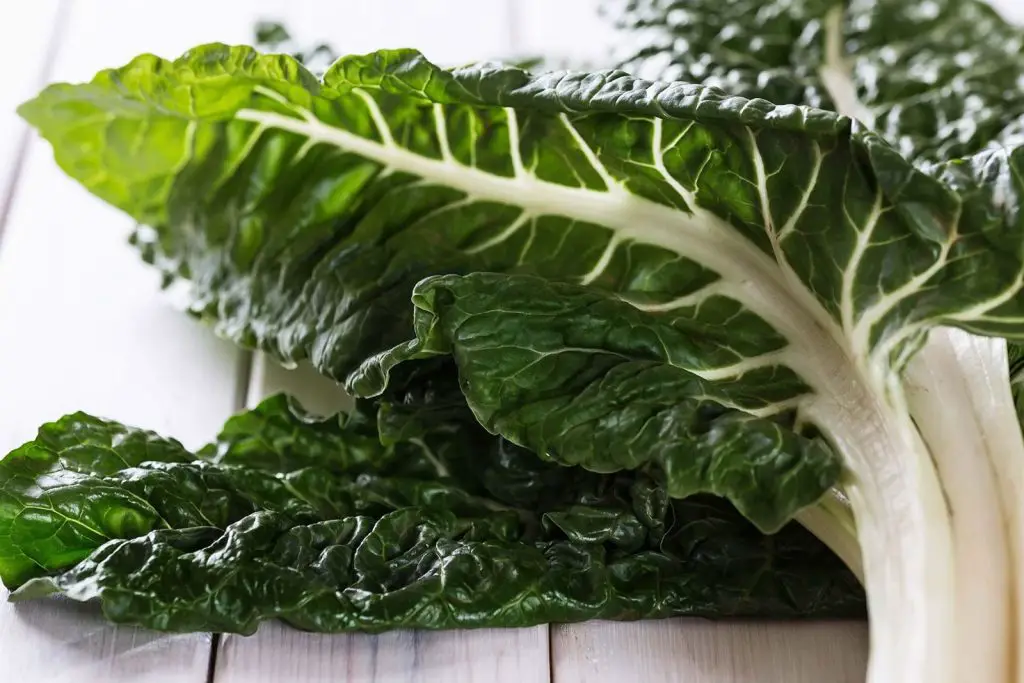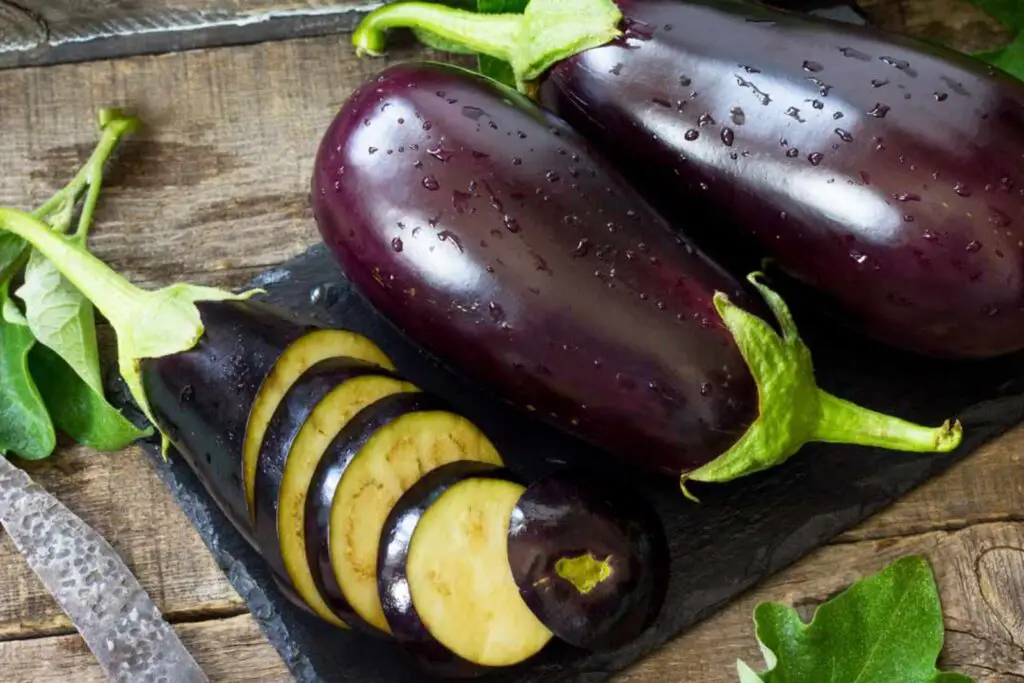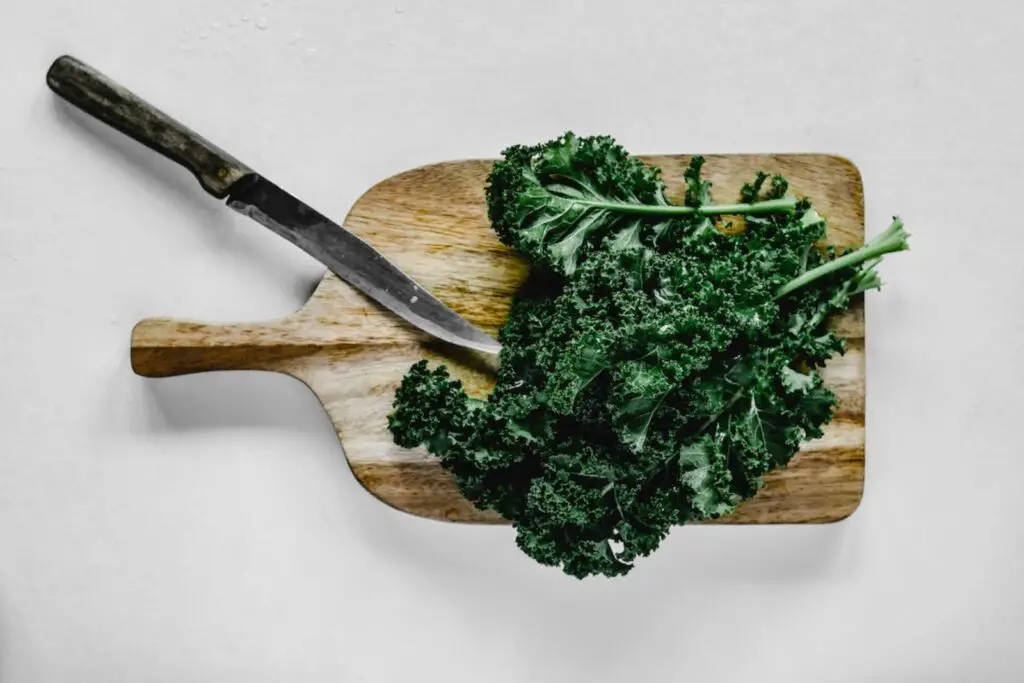
Eggplants, also known as aubergines, are a versatile and widely used vegetable in many cuisines around the world. They belong to the nightshade family, Solanaceae, and are characterized by their glossy, smooth, and usually deep purple skin. However, there are also other varieties of eggplants that come in different colors such as white, green, or even striped. Freezing eggplants is a convenient way to preserve their freshness and have them readily available for future use. Whether you’ve harvested a surplus from your garden or want to stock up on this versatile vegetable, freezing them properly will help retain their flavor and texture. In this guide, we’ll walk you through the steps to freeze eggplants effectively, ensuring they stay delicious and ready to use whenever you need them.
Here are the simple steps to freeze eggplants:
Step 1: Select and prepare the eggplants
When freezing eggplants, it’s important to start with fresh and firm ones. Choose eggplants that have a smooth and shiny skin without any wrinkles or soft spots. Fresh eggplants will have a better texture and flavor after freezing.
Before preparing the eggplants for freezing, it’s crucial to wash them thoroughly under cool running water. This helps remove any dirt, dust, or residue that may be present on the skin. Gently rub the eggplants with your hands or use a vegetable brush to ensure all areas are cleaned.
After washing, pat the eggplants dry with a clean towel. Drying them helps remove excess moisture, which can lead to ice crystals forming during freezing and potentially affect the texture of the eggplants. So, make sure to give them a thorough drying.
Should I salt eggplants before freezing them?
Salting eggplants before freezing is an optional step. Salting can help draw out excess moisture from the eggplants and potentially improve their texture. However, it is not necessary for freezing, and the decision to salt or not depends on personal preference and the specific recipe in which the frozen eggplants will be used.
Step 2: Cut and blanch the eggplants
After selecting and preparing the eggplants, the next step is to cut them into your desired shape and size. You can slice them into rounds, cubes, or strips, depending on how you plan to use them later. This step allows for easier portioning and handling when you’re ready to use the frozen eggplants.
Blanching the eggplants before freezing is an essential step that helps preserve their color and texture. Blanching involves briefly boiling the eggplant slices in water and then cooling them rapidly. This process helps inactivating enzymes that can cause discoloration and deterioration in quality during freezing.
To blanch the eggplants, bring a pot of water to a rolling boil. Carefully place the sliced eggplants into the boiling water and let them cook for about 4 to 5 minutes. The exact cooking time may vary slightly depending on the thickness of the slices. You want the eggplants to become slightly tender but not overly cooked.
After blanching, it’s crucial to transfer the eggplants to an ice bath immediately. The ice bath is a container filled with ice and cold water. Placing the blanched eggplants in the ice bath rapidly cools them down, halting the cooking process and preserving their texture and color. Leave the eggplants in the ice bath for a few minutes until they are completely cooled.
Can I freeze eggplants without blanching them first?
While it is possible to freeze eggplants without blanching them first, it is generally recommended to blanch them for the best results. Blanching helps preserve their color, texture, and overall quality during freezing. It inactivates enzymes that can cause discoloration and deterioration, resulting in better frozen eggplants.
Can I freeze whole eggplants?
Freezing whole eggplants is not recommended due to their high water content. When frozen, the water in the eggplant expands, causing the vegetable to become mushy upon thawing. It is best to cut the eggplants into slices or cubes before freezing them, as this allows for more effective freezing and maintains better quality.
Can I freeze eggplants with the skin on?
Yes, you can freeze eggplants with the skin on. The skin of eggplants contains valuable nutrients and adds texture to dishes. However, it’s important to note that the skin may become slightly tougher after freezing.
Step 3: Drain and dry the blanched eggplants
Once you have blanched the eggplants and cooled them in the ice bath, it’s important to properly drain and dry them before freezing. This step helps remove excess moisture, which can lead to the formation of ice crystals and potentially result in freezer burn.
Carefully remove the blanched eggplants from the ice bath, ensuring they are no longer submerged in water. Shake off any excess water and transfer them to a colander or a clean kitchen towel to drain. Allow the eggplants to sit in the colander for a few minutes, allowing the water to drain away.
After draining, gently pat the blanched eggplants dry with a paper towel or a clean kitchen towel. This step helps remove any remaining moisture on the surface of the eggplants. Excess moisture can contribute to the formation of ice crystals during freezing, which can negatively affect the texture and quality of the frozen eggplants.
Step 4: Package the eggplants for freezing
After draining and drying the blanched eggplants, it’s time to package them for freezing. Proper packaging is essential to protect the eggplants from freezer burn and maintain their quality during storage.
Start by dividing the blanched and dried eggplants into portion sizes that are suitable for your needs. Consider how you typically use eggplants in your recipes and package them accordingly. This step allows for convenient portioning when you’re ready to use the frozen eggplants in the future.
Next, place the portioned eggplants into freezer-safe bags or airtight containers. Freezer-safe bags are a popular choice as they are flexible, space-saving, and allow for easy stacking in the freezer. Airtight containers, such as plastic containers or glass jars, are also suitable options.
When using bags, it’s important to remove as much air as possible before sealing them tightly. Air exposure can contribute to freezer burn, which can affect the texture and flavor of the frozen eggplants over time. Squeeze out the excess air from the bags or use a vacuum sealer if available. For airtight containers, ensure that they are tightly sealed to minimize air contact.
Step 5: Label and date the packages
After packaging the eggplants for freezing, it’s important to label each package with clear and accurate information. Labeling helps you easily identify the contents of the packages and keep track of their freezing time. This ensures that you can use the oldest packages first and maintain a proper rotation system.
Using a permanent marker, write the contents of the package on each bag or container. For example, you can write “Blanched Eggplant” to indicate the type of eggplant and the preparation method. This labeling will help you quickly identify the package when you’re searching for a specific item in the freezer.
In addition to labeling the contents, it’s crucial to include the date of freezing on each package. Write the date in a clear and visible manner so that you can easily determine how long the eggplants have been stored. This information is valuable for maintaining the quality and freshness of the frozen eggplants.
Step 6: Freeze the eggplants
After properly packaging the eggplants, the final step is to freeze them. Freezing the eggplants correctly helps maintain their quality and prevents them from sticking together. Here’s how to freeze them effectively:
- Start by arranging the packaged eggplants in a single layer on a baking sheet or tray. This step allows the eggplants to freeze individually without sticking together. It also helps them freeze faster and more evenly.
- Place the tray with the eggplants in the freezer and let them freeze for about 1 to 2 hours or until solid. The exact freezing time may vary depending on the size and thickness of the eggplant portions. Freezing the eggplants individually before stacking them helps prevent them from clumping together and allows for easier portioning later.
- Once the eggplants are frozen solid, you can stack the packages to save space in the freezer. Stacking them vertically or horizontally, depending on the available space, helps maximize the storage capacity. Make sure the packages are tightly sealed to prevent air exposure.
Remember to keep the freezer temperature at or below 0°F (-18°C) to maintain the quality of the frozen eggplants. With proper freezing, you can enjoy the convenience of having frozen eggplants readily available for your favorite recipes whenever you need them.
Other related questions
How long can eggplants last in the freezer?
Eggplants can last in the freezer for up to 8 to 10 months. Properly packaged and stored eggplants can maintain their quality, flavor, and texture during this time. However, it’s recommended to consume them within the first 3 to 6 months for the best taste and overall quality.
How do I defrost eggplants?
To defrost eggplants, it’s best to transfer them from the freezer to the refrigerator and let them thaw overnight. This gradual thawing process helps maintain their texture and quality. Once thawed, use the eggplants within a day or two for the best results. Avoid defrosting them at room temperature or using methods like microwaving, as these can lead to a loss of texture and flavor.
Can I refreeze eggplants?
It is generally not recommended to refreeze eggplants after they have been thawed. The freezing and thawing process can affect the texture and quality of the eggplants. Once thawed, it is best to use them promptly to ensure optimal taste and texture.
How do I know if the eggplants have gone bad after being frozen?
To determine if frozen eggplants have gone bad, look for signs such as significant discoloration, a slimy texture, or a sour or off-putting odor. Additionally, freezer burn may occur, characterized by dry, discolored, or shriveled patches on the eggplants. If you notice any of these signs, it is best to discard the eggplants, as they may have deteriorated in quality and taste.
What are some popular recipes that use frozen eggplants?
Frozen eggplants can be used in a variety of popular recipes. Some common dishes include eggplant parmesan, moussaka, ratatouille, curries, and stir-fries. These recipes often involve cooking the frozen eggplants directly, either by baking, frying, or simmering, allowing them to be incorporated into flavorful and delicious meals.
Can I freeze eggplants that have been cooked?
Yes, you can freeze cooked eggplants. Cooked eggplants can be frozen, but their texture may change slightly upon thawing. It’s best to cool the cooked eggplants completely before packaging them for freezing. Properly wrap and label the cooked eggplants, and they can be stored in the freezer for future use in various recipes.








